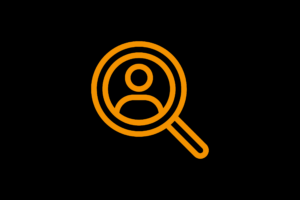Do you often find yourself tapping your fingers on your desk, twirling your hair, bouncing your foot or humming to yourself? These are just a few examples of stimming.
The word stimming, or to stim, is a shortened way of saying ‘self-stimulatory behaviour’. This is because the actions we do or sounds we make when stimming, all stimulate our senses in some way. We sometimes don’t even realise we are doing it.
Some people often eat for the stimulation from crunching, chewing or sucking. Are you someone who reaches for a bag of crisps to crunch on, even when you’re not actually hungry?
But why do we do it?
Excitement and joy
When we stim, we get sensory feedback; we repeat the movement, the sound or the action because it feels good to us. .
Anxiety
Stimming can give us a sense of control over our bodies when we are scared or worried. The repetitive actions or sounds can be calming and soothing.
Sensory overload
We can stim to help us focus on one sensation and try to block out the other sensory input from our environment. For example, we might listen to our own music using headphones in a public place to block out all of the other sensory overwhelm: bright lights, smells, sounds and people. By listening to our own loud music we are focussing on the vibrations in our ears and the effect grounds us in the moment and helps us feel calm.
Concentration
Stimming by keeping your mouth or hands busy can help you concentrate. Sometimes when people have chewing gum, it isn’t to enjoy the taste, but because the repetitive of chewing is quite calming. Also using something like putty (there is special putty made for stimming called Therapy Putty) or a fidget toy can help you listen better in a classroom.
Everyone on the planet stims. All of the above examples of stimming are things most people do. But because of our sensory differences, it is common for autistic people to stim in different ways to non-autistic people. For example, we may need more movement to be able to feel calm, or we may need to have more access to things to focus on to avoid sensory overload. It can be hard for non-autistic people to understand why we need these things when they don’t, but their brains work a little differently.
Different types of stimming
| VOCAL | ACTIONS | SOUND | VISUAL |
| Repeating sounds Whistling Humming Singing Grunting |
Jumping Flapping hands Clicking fingers Tapping Pacing Chewing Licking Spinning Picking nails/skin Rubbing/stroking Doodling Sniffing smells you like |
Listening to music Tapping your ears Cupping your ears Listening to white noise |
Blinking lots Turning lights on and off Watching lava lamps Colour changing lamps. Focussing on patterns Kaleidoscopes |
Should stimming ever be stopped?
Stimming does not need to be stopped unless it is harmful. If a stim is painful, finding alternative ways to feel the same sensory input in a safe way is really helpful. For example, if banging or hitting your head is a stim, a safer option could be to use something softer like a pillow to hit yourself with. There are a variety of tools/ techniques you can use to stim in a safe and positive way. Read more in the sensory smart section of our website.
When told to stop stimming, it removes our way of feeling calm or regulated, and drawing attention to our stims can make us feel embarrassed or like we have done something wrong.
It also uses more energy to focus on not doing it! All our thoughts turn to ‘I must not do it’ instead of the thing that needs our attention. This can be so draining!
To find out more about our different senses click here.



